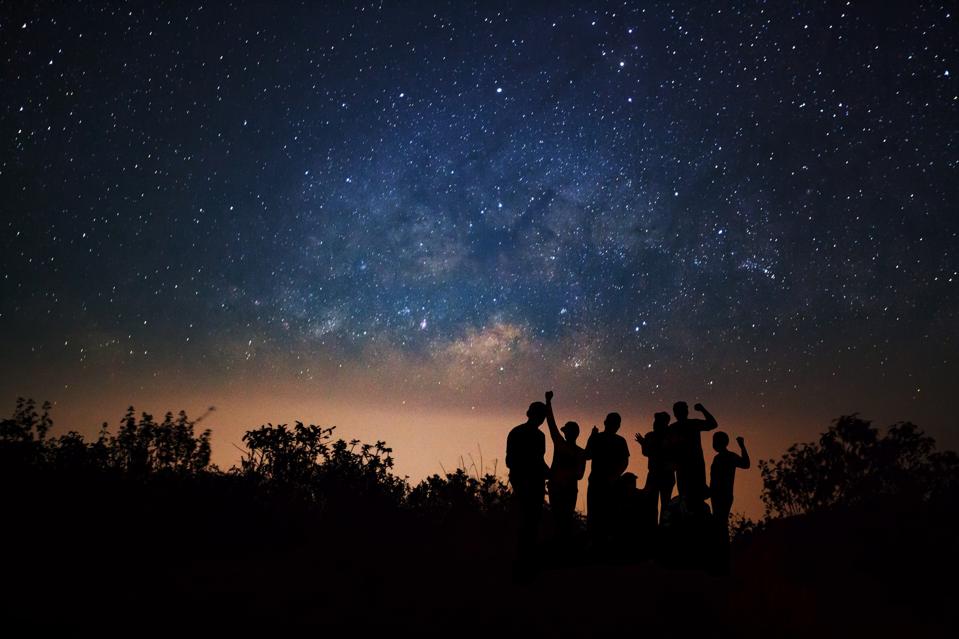
World Space Week from Oct-4-10 begins with International Observe the Moon Night 2025 this Saturday and a stargazing event called “100 Hours Under One Sky.”
getty
Anyone can be a master stargazer. Some think the night sky’s thousands of stars make it a confusing place, but the night sky can be navigated, and it can be known — all you need to give it is time and patience.
From Oct. 4–10, World Space Week 2025 is a celebration of science, exploration and discovery, with a packed programme of stargazing activities and live broadcasts. During its seven nights, communities across the globe will be invited to connect with the night sky through stargazing challenges, live streams and interactive events designed to inspire newcomers.
It’s taking place at a great time of year, with the stars of fall and winter — some of the brightest of the year — returning to the Northern Hemisphere’s night sky., as well as frequent Northern Lights, a full harvest moon that’s close to Saturn this weekend, the Orionid meteor shower and a couple of bright comets.
Observe The Moon Night
Arguably, the popular highlight of the celebrations is International Observe the Moon Night, which takes place on Saturday, Oct. 4. On that night, our natural satellite will be a 92%-lit waxing gibbous moon. Observers to see the terminator — the division between day and night on the moon — throw shadows across craters and mountain ranges (binoculars or a small telescope will give you the best view).
Although NASA has a website for International Observe the Moon Night — as well as a YouTube trailer, Flickr and X pages — it also acts as a hub for thousands of events staged by skywatchers across the world.
“Observe the Moon Night brings NASA and space science directly to people in their local communities,” said Dr. James O’Donoghue, a planetary scientist at the University of Reading, who’s helping stage an event in conjunction with the Royal Astronomical Society in the U.K., in a press release. “Our moon is perfect for stargazing – it’s close enough that you can see details with just your eyes, but telescopes reveal so much more. We’re excited to show people how amazing the moon really is and share the fascination humans have had with it for thousands of years.”
ForbesFull Moon October 2025: When To See The ‘Harvest Supermoon’ RiseBy Jamie Carter100 Hours Of Stargazing
If you’re just starting out in stargazing, a great place to start is the 100 Hours website, which is part of the global International Astronomical Union’s 100 Hours of Astronomy program.
Running from Oct. 2-5, “100 Hours Under One Sky” invites people from across the U.K. and Ireland to complete four simple stargazing challenges — including finding stars, patterns of stars and a planet — using only the naked eye and a cellphone.
“100 Hours Under One Sky is not aimed at those with expert knowledge of astronomy; it’s about getting people interested in the stars and planets above their heads – and to have fun doing it,” said Dr. Jenny Shipway, who is in charge of the initiative. “Stargazing is an inspiring and uplifting experience that everybody can enjoy … all you need to do is visit our website, go outside, and look up!”
Wishing you clear skies and wide eyes.

